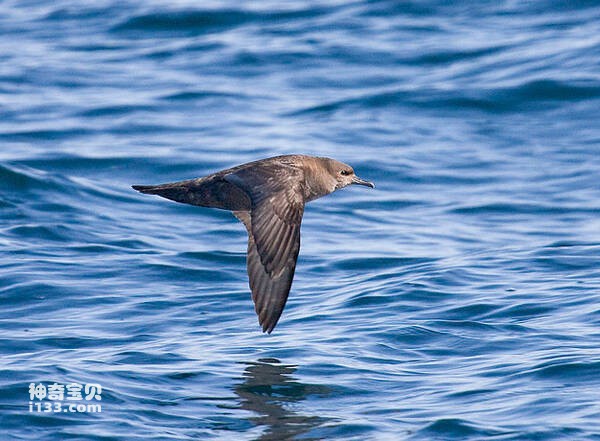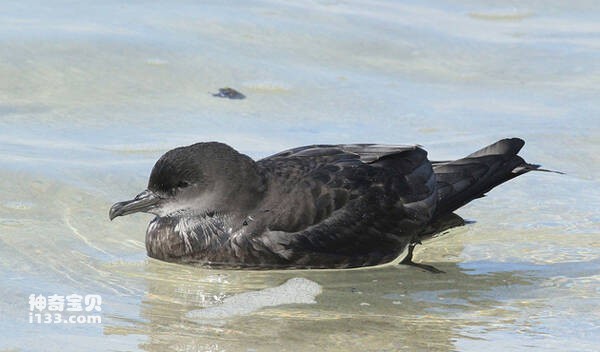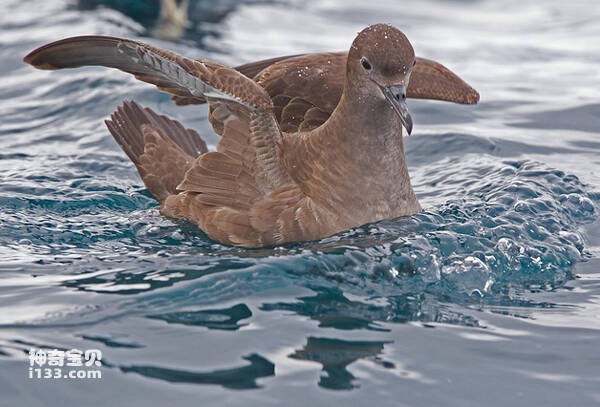Puffinus tenuirostris
IUCN
LCBasic Information
Scientific classification
- name:Puffinus tenuirostris
- Scientific Name:Puffinus tenuirostris,Short-tailed Shearwater
- Outline:Waterfowl
- Family:
Vital signs
- length:35-40CM
- Weight:No textual research information is available
- lifetime:No textual research information is available
Feature
Small body, short neck, thin mouth, tip hook, short nasal tube, located at the base of the rostral peak, long and narrow wings, sickle-shaped
Distribution and Habitat
Breeds in the South Pacific off the southeast coast of Australia, Bass Strait, and Tasmania. Outside the breeding season, it usually roams the North Pacific to Japan, Ogasawara Islands, California, the Bering Sea, Anadell Bay, Kamchatka Peninsula, Alaska, the Canadian coast of British Columbia, the Kermadec Islands, and the Chinese coast of Taiwan.
Appearance
The shearwater is a medium-sized seabird. Small size, short neck, thin mouth, tip hook, short nasal tube, located at the base of the rostral peak. The wings are long and narrow, sickle-shaped. The abdomen of the body is obese and spindle shaped. There are 11 primary feathers, 10 secondary feathers, and the second primary feather is the same length or slightly shorter than the first. The tail is rounded and relatively short. The tarsetatarsus is very flat, the anteroposterior margin is obvious, the reticulate scale, the first three toes are webbed, but narrow, the toe is slightly concave, the hind toes are short, the position of the toe is higher than the other toes, not on the same level. The feathers are thick, dense and quite hard, especially on the back side. The upper body is dark brown, and the lower body is lighter and grayish brown. Head and neck almost black; Chin and throat are gray, inner feathers are light gray, underwing coverts are gray, with light gray tips.
The iris i
Details
Puffinus tenuirostris is a Short-tailed Shearwater with no subspecies.

The shearwater is active in groups on the open ocean, except during the breeding season, and is active during the day but sometimes at night. During breeding, they are active at night. Good at flying, often tireless and day and night in the sea at low altitude. The flight is fast and light, and the feet are extended back and far out of the tail. It is usually flown by diving, gliding, and a combination of short wings-quick agitation. He is also good at swimming, but has difficulty and clumsiness walking on land; It is also more difficult to take off from land, usually you need to climb to a high place to fly, and you cannot take off from flat ground.
The shearwater feeds mainly on shrimp and small Marine animals. Foraging takes place mainly at the surface, often while swimming, and often with whales and whaling ships to peck at discarded and potentially useful food. Whales also bring animals to the surface when they surface, providing them with an opportunity to feed.

In early May, the shearwater begins to wander in small groups toward the North Pacific Ocean, passing Japan, Ogasawara Islands, California, the East coast of Canada, the Hawaiian Islands, Alaska, Kamchatka Peninsula, Anadell Bay, and the Bering Sea, and south to the coast of New Zealand's North Island and neighboring islands such as the Kermadecks. Occasionally to Taiwan, China. In China, one bird was spotted on Green Island off the coast of Taiwan in 1981 and one off the coast of Taitung in April 1988.
The breeding season is between late September and early May. Nest in a hole in the ground on the coast or island. Large groups often nest together to breed, so the nests are quite dense, with an average of one nest per square meter, and the adults usually return to the breeding grounds in September. They usually return to their old nest and join with their old mate. Nesting birds dig themselves, and do so at night, resting and foraging at sea during the day, but some remain on the coast during the day. Digging can take up to 10 to 40 days, so the holes are all dug around early October. After the hole is dug, all the birds return to the sea and live at sea for about 20 days before returning to the hole to lay eggs. The spawning time is extremely stable and varies little between different populations in different locations, with spawning usually occurring around 20 November each year, with peak spawning occurring between 2 and 26 November and being fairly consistent between the same populations on the same nesting ground, producing almost on the same day. One egg is laid in each litter. The eggs are oval, white, smooth and unspotted, with a size of 63.5-77.2×41-51.5 mm, averaging 71×47 mm. After the eggs are laid, they are incubated by the male for 12-14 days, and then by the female. The sex is exchanged more than twice throughout the incubation period. The average incubation period is about 53 days, and 55-56 days have been recorded. For the first week after the chicks hatch, the parent birds only go to feed every night, and then the number of visits to the nest gradually decreases. The chicks also grow quickly, weighing only 15.1 grams when they hatch, and are covered with thick gray feathers. About 2 months later, the chicks replace the feathers and grow feathers. At this time, the parent bird no longer feeds, and through starvation forces the young bird to come out of the hole and slowly go out to sea at night, around April or early May. Since the chicks emerge at about the same time, they gather in large numbers at sea, where they stop for a short time near the nest and then disperse into small groups and gradually wander around the nest.

Every summer, millions of dark-gray shearwaters arrive off the coast of California, approaching like clouds. Although it is one of the most abundant seabirds in the world, with a population of 20 million, it is believed that the shearwater is on the verge of being listed as "endangered" due to its rapid decline in New Zealand and the eastern North Pacific.
It was included in the List of Beneficial Terrestrial Wildlife under State Protection or of Important economic and scientific research Value issued by the State Forestry Administration of China on August 1, 2000.
Listed on the International Union for Conservation of Nature (IUCN) 2012 Red List of Threatened Species ver 3.1 - Not Threatened (LC).
Protect wild animals and eliminate wild meat.
Maintaining ecological balance is everyone's responsibility!








